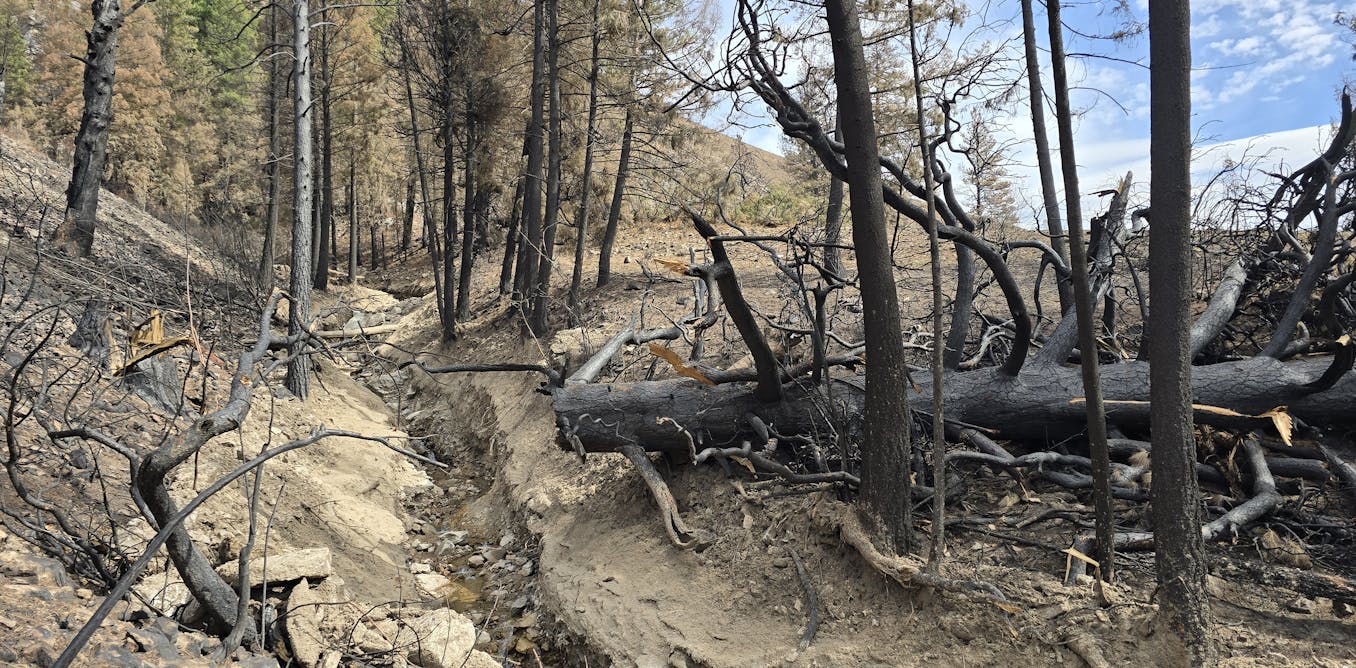Unraveling the Dangers: How LA’s Rainfall Could Trigger Floods and Debris Flows
As the people of Los Angeles welcome the much-needed rain that nourishes the parched landscape, experts are sounding the alarm about the potential dangers lurking beneath the surface. With recent wildfires severely damaging vast areas of vegetation, the risk for flooding and debris flows is alarmingly high. This article delves into these risks, providing insights from a geologist on the impacts of rainfall in wildfire burn scars and essential safety measures for residents.
Understanding the Risks of Flooding and Debris Flows
The phenomenon of flooding and debris flows is not new to Los Angeles, but the combination of heavy rainfall and recent wildfires creates a perfect storm for disaster. Rainfall, especially when intense and sudden, can lead to rapid runoff, particularly in areas stripped of vegetation by wildfires. This is where the dangers truly unfold.
- Flooding: Heavy rain can overwhelm drainage systems, leading to street flooding, property damage, and even loss of life.
- Debris Flows: The combination of water and loose soil can result in debris flows, which are fast-moving mixtures of water, soil, rocks, and vegetation that can travel down slopes at alarming speeds.
These events are not only destructive but can also be life-threatening. According to the United States Geological Survey (USGS), debris flows have the potential to reach speeds of up to 20 miles per hour, making them incredibly dangerous for anyone caught in their path.
The Impact of Wildfire Burn Scars
Wildfires create burn scars, areas where vegetation has been completely or partially destroyed. These scars significantly alter the landscape, affecting how water is absorbed into the ground. When rain falls on these areas, the lack of vegetation means there’s less absorption, leading to increased runoff. A geologist specializing in the study of these effects explains:
“After a wildfire, the soil becomes hydrophobic—that is, it repels water. This can create a situation where water runs off instead of soaking into the ground, significantly increasing the risk of flooding and debris flows.”
This hydrophobic condition can last for months or even years, depending on the severity of the burn and the recovery of the vegetation. Consequently, areas that once absorbed rainwater effectively now become prone to catastrophic runoff.
Historical Context and Recent Events
Los Angeles has a history of devastating floods and debris flows following wildfires. For instance, the 2003 Cedar Fire and the 2018 Woolsey Fire led to significant flooding and debris flow events in the following years. Residents in areas affected by these fires learned the hard way that the aftermath of wildfire destruction can linger long after the flames are extinguished.
In 2023, following a particularly hot and dry summer, Los Angeles experienced significant wet weather, raising concerns among experts. The National Weather Service issued warnings for areas with burn scars, cautioning residents about the imminent risks. Such alerts are a crucial part of preparing for the potential dangers associated with heavy rainfall.
What Residents Should Know
For those living in areas prone to flooding and debris flows, staying informed and prepared is vital. Here are some essential tips:
- Stay Updated: Follow local news outlets and weather services for real-time updates about rainfall and flood warnings.
- Emergency Kit: Prepare an emergency kit that includes food, water, medications, and important documents in case of evacuation.
- Evacuation Routes: Familiarize yourself with local evacuation routes and have a plan in place for your family.
- Property Preparations: If you live in a high-risk area, consider investing in sandbags or other flood barriers to protect your property.
Knowledge is power, and being proactive can make all the difference when severe weather strikes.
Community and Government Response
Local governments and community organizations play a pivotal role in preparing for and responding to flooding and debris flow events. Many municipalities in Los Angeles are implementing measures to mitigate risks:
- Improved Drainage Systems: Cities are investing in upgrading drainage systems to handle increased runoff effectively.
- Community Education: Programs designed to inform residents about the risks associated with flooding and debris flows are critical for community safety.
- Regular Monitoring: Geologists and environmental scientists monitor burn scars and rainfall patterns to provide early warnings to communities.
Collaboration between government agencies, local organizations, and residents is essential for minimizing the impact of these natural disasters.
Looking Forward: Climate Change and Future Risks
As we look to the future, it’s important to consider the broader implications of climate change on Los Angeles’ weather patterns. Increasingly erratic weather, including more intense storms and prolonged dry periods, is expected to become the norm. This raises several concerns:
- Increased Frequency of Wildfires: Drier conditions can lead to more frequent and severe wildfires, resulting in larger burn scars.
- More Intense Rain Events: Climate change is expected to increase the intensity of rainfall, heightening the risk of flooding and debris flows.
- Long-Term Recovery Challenges: Recovery from wildfires and subsequent flooding will become more complex as the frequency of these events increases.
Addressing these challenges requires a concerted effort from policymakers, scientists, and the community to implement strategies that enhance resilience against the impacts of climate change.
Conclusion
As Los Angeles experiences much-needed rainfall, it’s essential to remain vigilant about the potential dangers of flooding and debris flows, especially in the wake of wildfires. Understanding these risks and taking proactive measures can help protect lives and property. By staying informed, preparing adequately, and engaging with community resources, residents can navigate the challenges posed by nature’s unpredictability. Together, we can build a safer, more resilient Los Angeles, ready to face whatever weather may come our way.
See more Your Daily Weather



